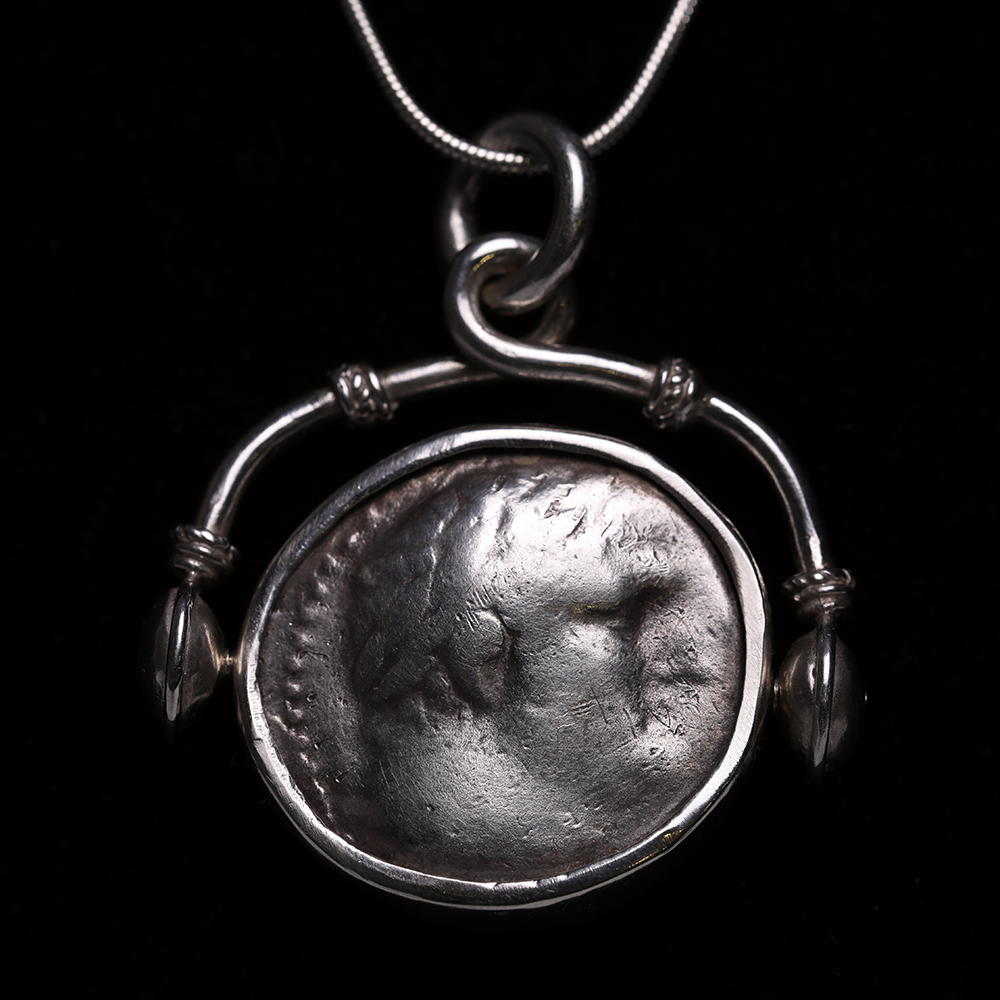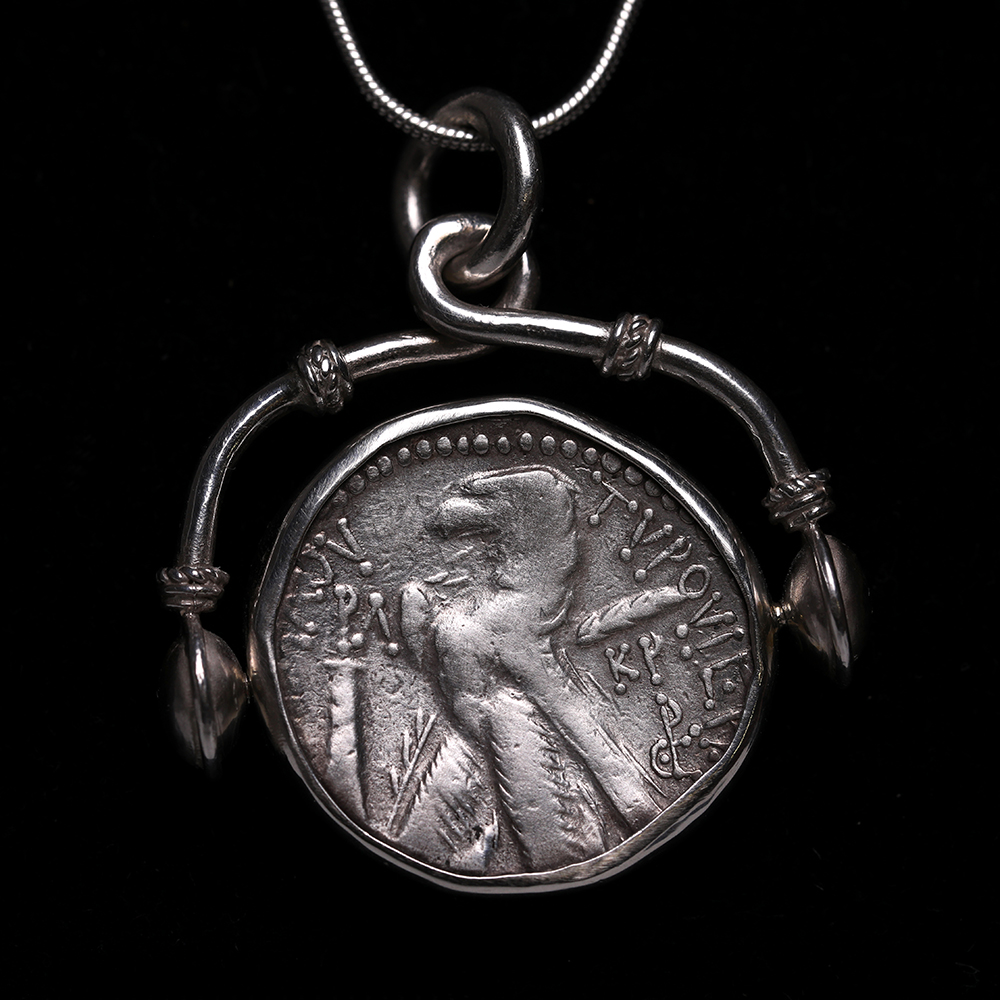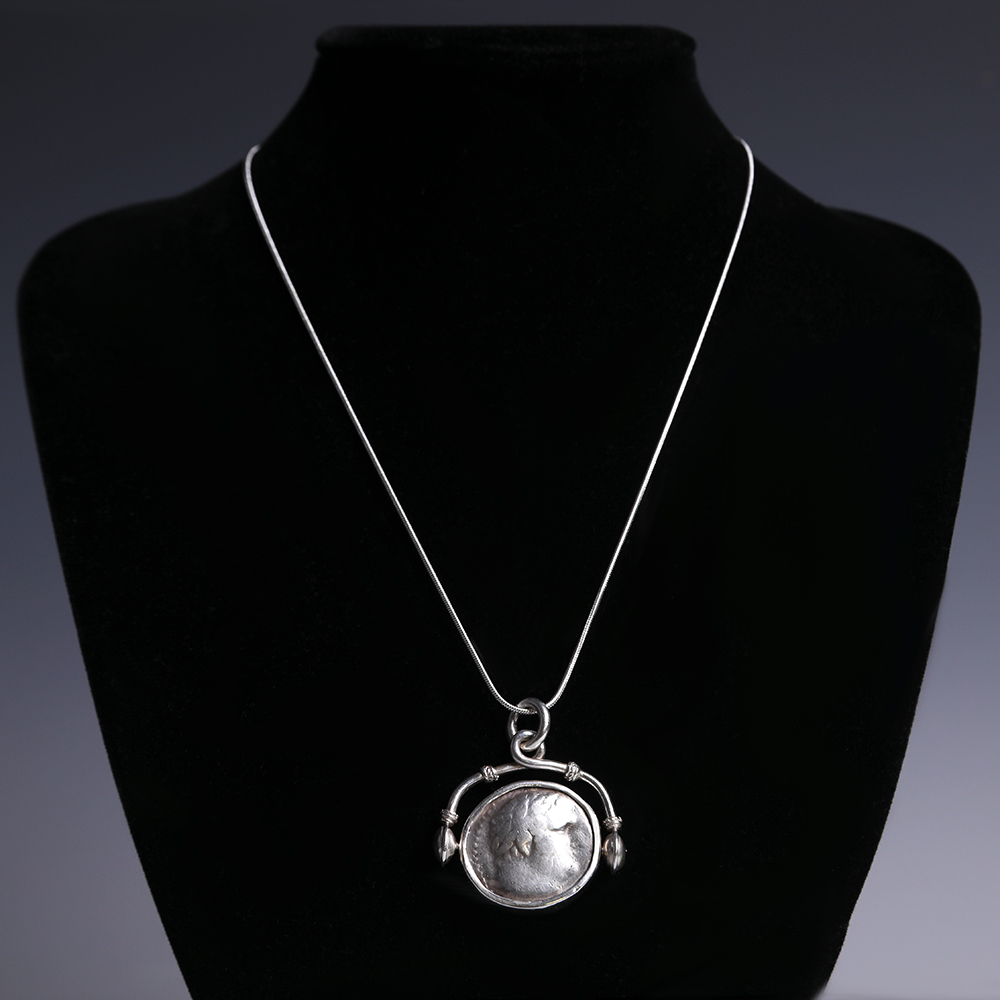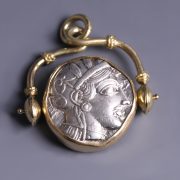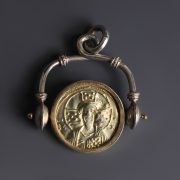The Phoenician city of Tyre retained a reputation for the quality of its silver coinage, which persisted until the city was conquered by Alexander the Great in 332 BC. Coins continued to be produced in Tyre under the Greek authority, and the production of an independent silver coinage was permitted under the subsequent Roman rule from around 125 BC. This comprised of silver tetradrachms (shekels), as this fine example, and didrachms (half-shekels), whose design remained constant for nearly two century. The coins bore the likeness of the Phoenician god Melkart, son of Baal, wearing a laurel, and an eagle with a palm branch over its shoulder on the reverse. Despite depicting the bust of a pagan god, the shekel of Tyre became the only currency accepted by the Jewish religious authority and was used as the medium of payment for the Temple tax in Jerusalem. It features prominently in several biblical episodes, and it is believe to be the coin received by Judas Iscariot in exchange for betraying Jesus.
Phoenician Shekel of Tyre Swivel Pendant with Silver Frame
$1,554.94
A fine Phoenician silver shekel of Tyre set in a modern silver frame. The pendant comprises a hollow-formed U-shaped hoop which twists at the top into a small loop and expands at the sides into two enlarged terminals, pierced to accommodate a separate silver bar for the swivel. The hoop is enriched by four equally spaced bands of twisted silver wire and holds an additional suspension loop at the top. The front of the pendant features the coin’s obverse, which depicts the laureate bust of Melkart facing right, whilst the reverse shows a standing eagle facing left, with a palm branch behind. Part of the legend ΤΥΡΟΥ ΙΕΡΑ[Σ] [ΚΑΙ] [ΑΣΥ]ΛΟΥ (Turou ieras kai asylou) is still visible around the coin’s edge. Written in the genitive case, the Greek inscription translates to “[the coinage] of Tyre, the holy and inviolable’. The Greek letter PΛ and KP are set in the filed at either side of the bird to indicate the mint.
Please note, the chain is for reference only, we do have chains available upon enquiry.
Condition: Fine condition.
In stock
| Weight | 21.70 g |
|---|---|
| Dimensions | W 3.6 x H 4.1 cm |
| Culture | |
| Region | |
| Metal |
